Scania G500 XT - Copma 7500
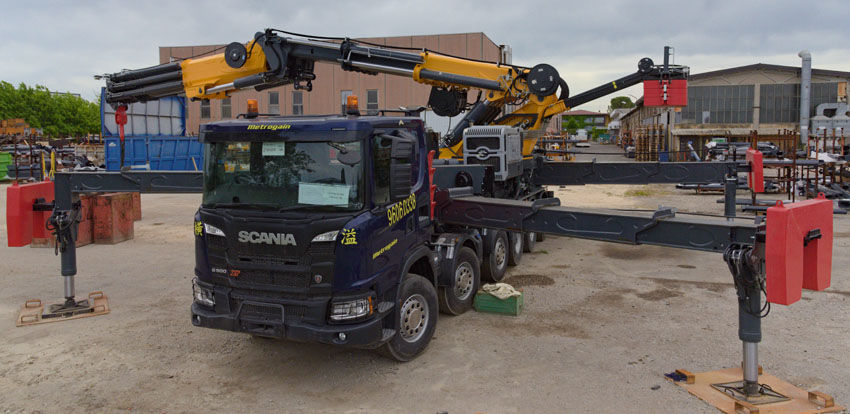
Here we are at the Copma factory in Castel Bolognese near Imola (I).
On the testfield stands the new 7500 model, the largest crane ever built by Copma.
On the testfield stands the new 7500 model, the largest crane ever built by Copma.
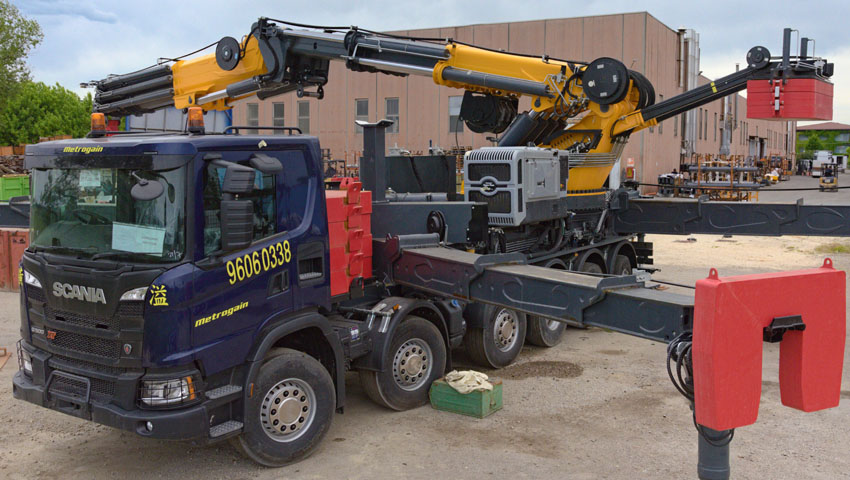
The crane will be delivered to a company in Hong Kong. For this specific market, the crane will be labeled 7588.
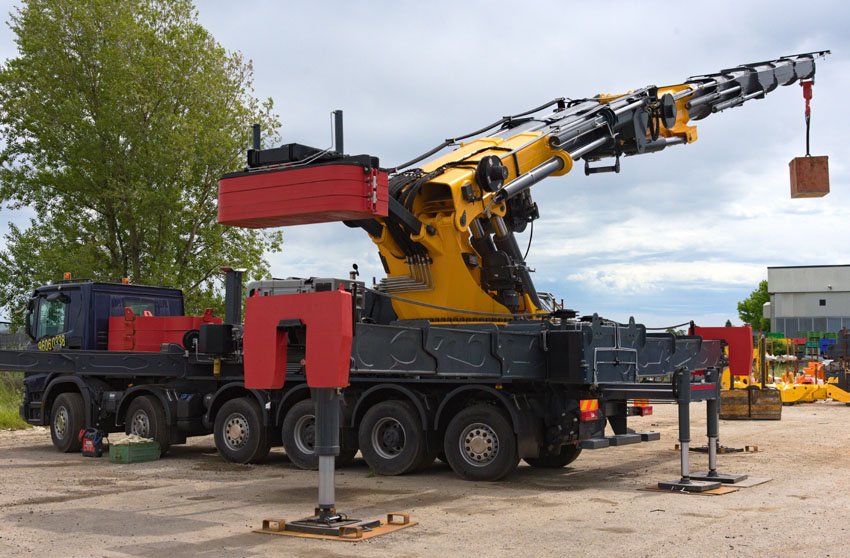
The crane is a new development in the 750t/m range, a huge step upwards from the previous released 3500 model (3588 in Hong Kong) that is also working in Hong Kong.
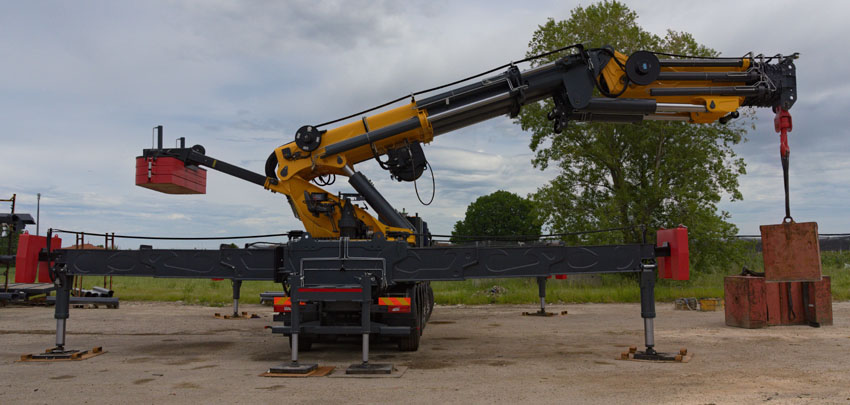
A new design was chosen to offer more flexibility during heavy lifts in close range. The base boom of the crane can now telescope 2x, offering a flexible working height for the main telescopic boom.
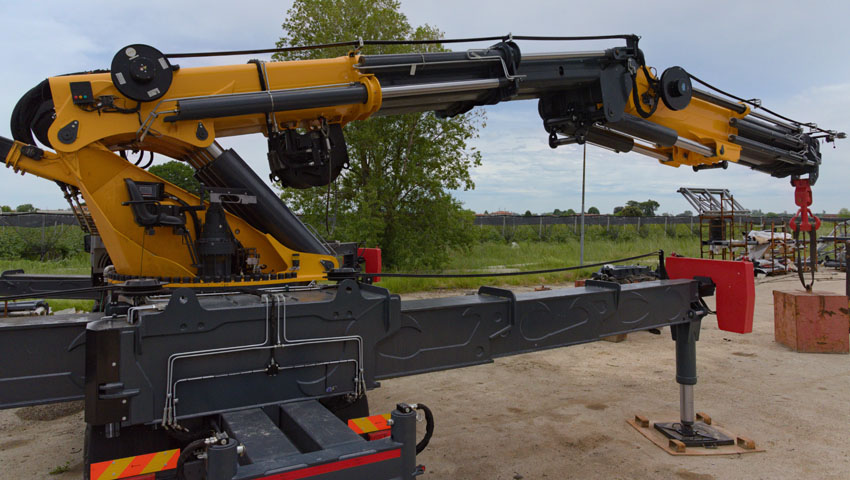
With this telescopic base boom the crane can be compact if needed, but also provide more tipping height for the main boom than a regular knuckleboom can offer with a fixed-length base.
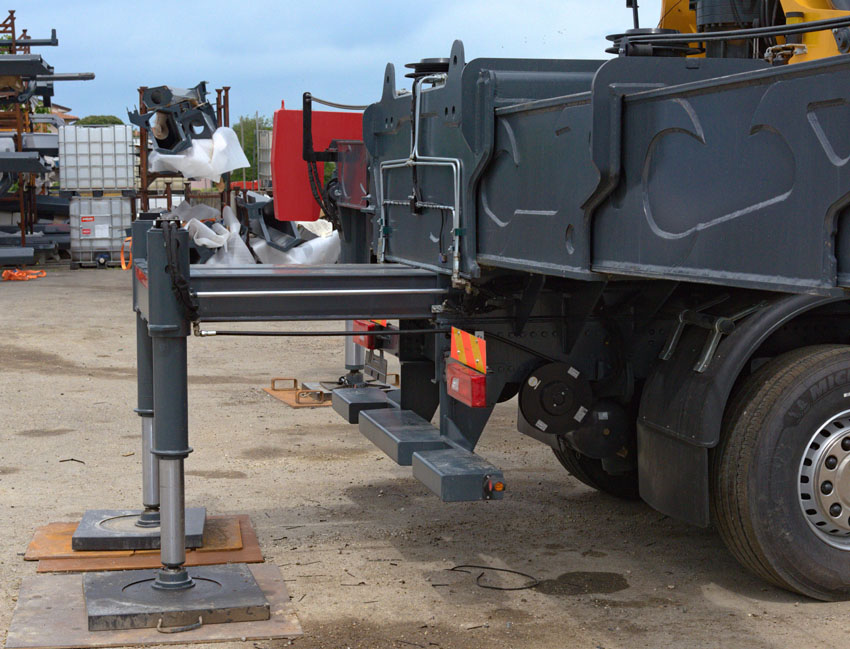
The crane stands on 6 outriggers. The rear holds 2 massive outriggers extending 3x sideways for the main load. These 2 smaller outriggers provide additional stability when working to the rear.
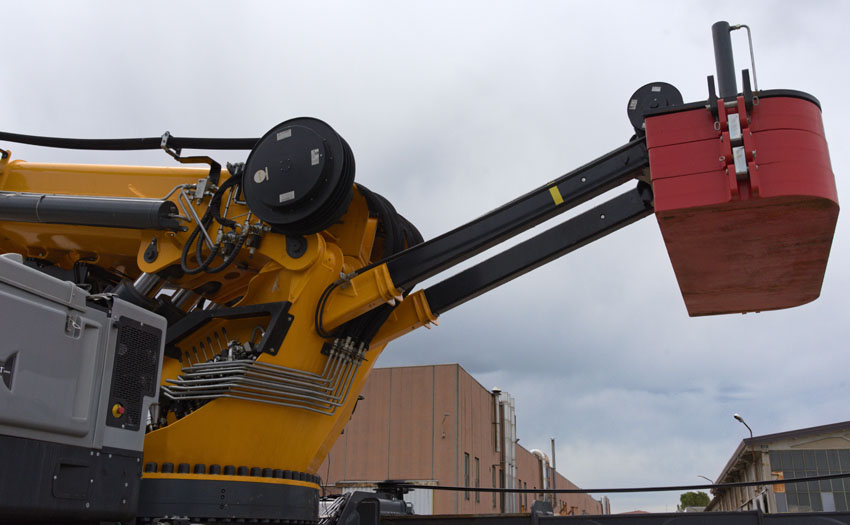
The turret of the crane holds this extendable ballast, 8 tons in total.
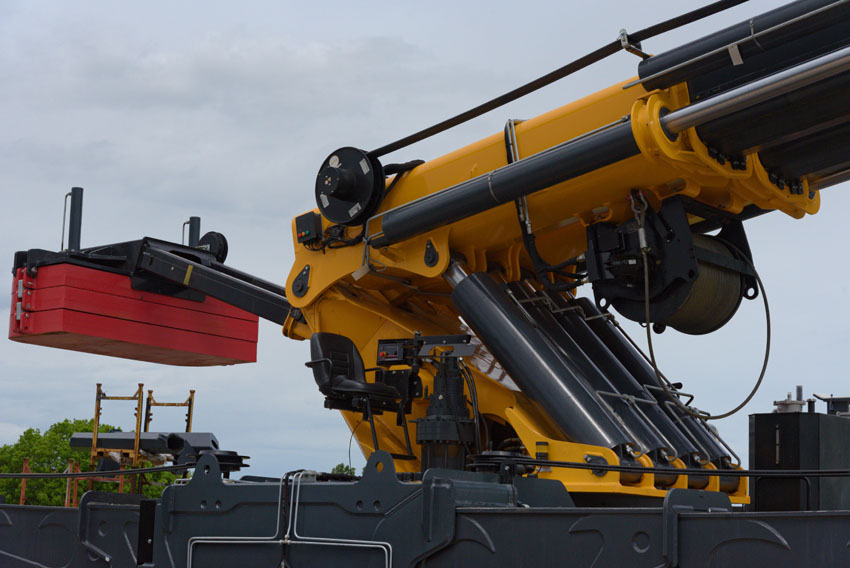
The base of the crane is of course large, as is to be expected with this lifting capacity. The base boom is moved by these 4 cylinders. Below the base boom hangs a large Brevini winch with a maximum line pull of 8,5 tons.
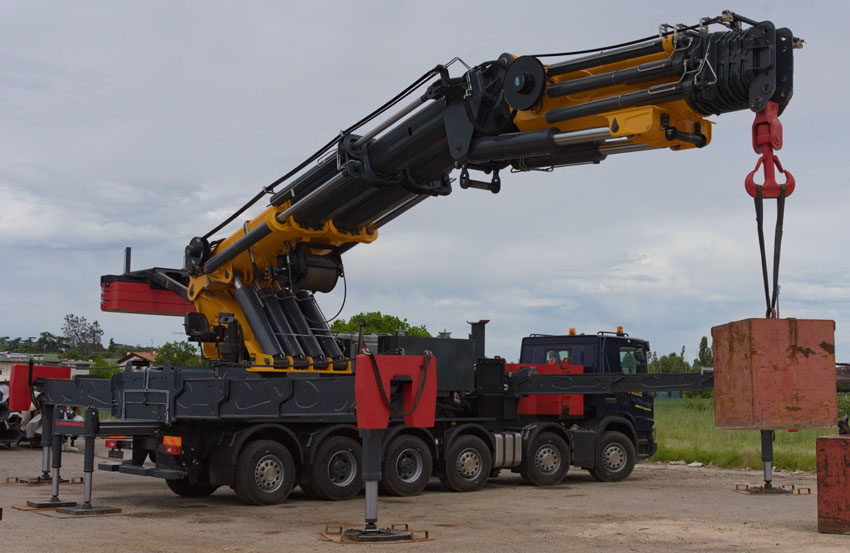
At the end of the base boom comes the actual main telescopic boom at which the loads are lifted (the base boom has no hook). With 6 extensions it gives this crane a maximum outreach of 22,4 meters at which it will still lift 16,4 tons! The lifting capacity of this crane is quite impressive, nearer to the truck the values quickly increase. For example it lifts 30,1 tons at 15,27 meters or 70 tons at 9,7 meters, which means 670 t/m real lifting capacity.
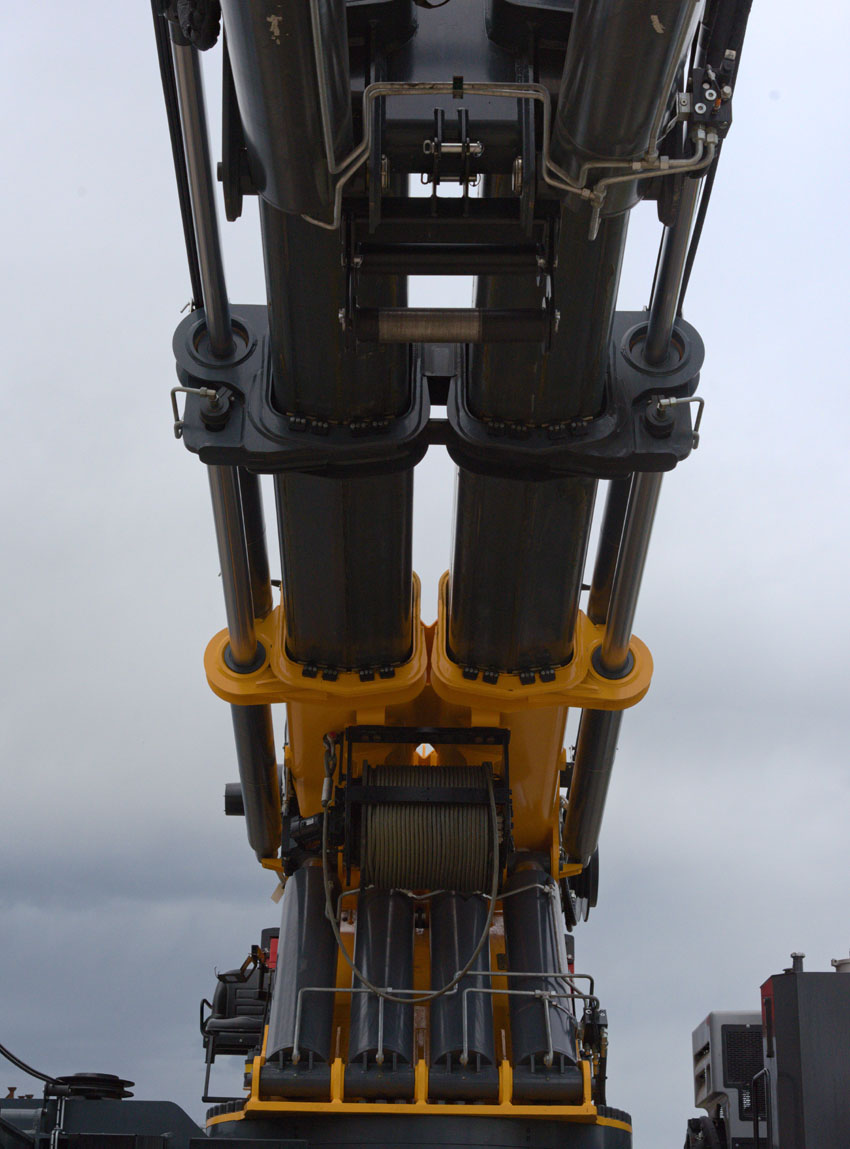
Here we have a closer look at this base boom. It is actually a double boom, combined to one single boom. The telescopic parts are individually supported, but also connected at the ends where the cylinders are mounted. Both parts have dual cylinders on the sides that are needed to support the high loads that are possible at close range.
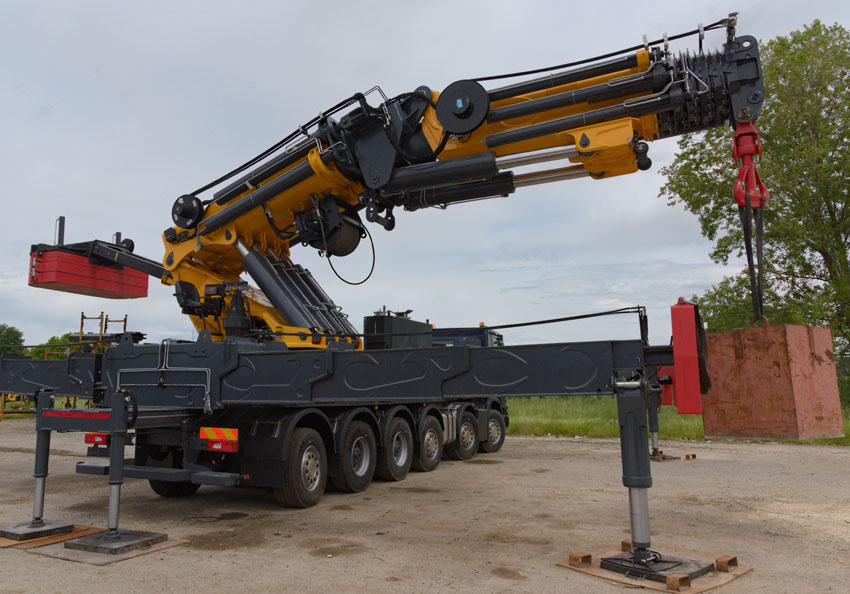
Here the base boom is closed, giving the most compact shape and low height for close lifting, for example when lifting indoors.
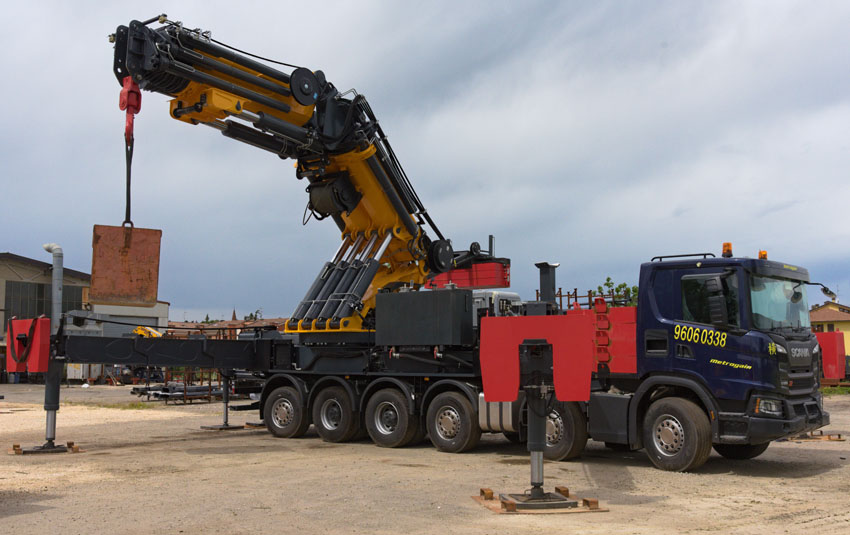
In a setup like this, a weight of almost 105 tons can be lifted at 6,2 meters outreach. This is perfect for this customer, who does a lot of heavy lifting at close range, like assembly of construction equipment and crawler cranes.
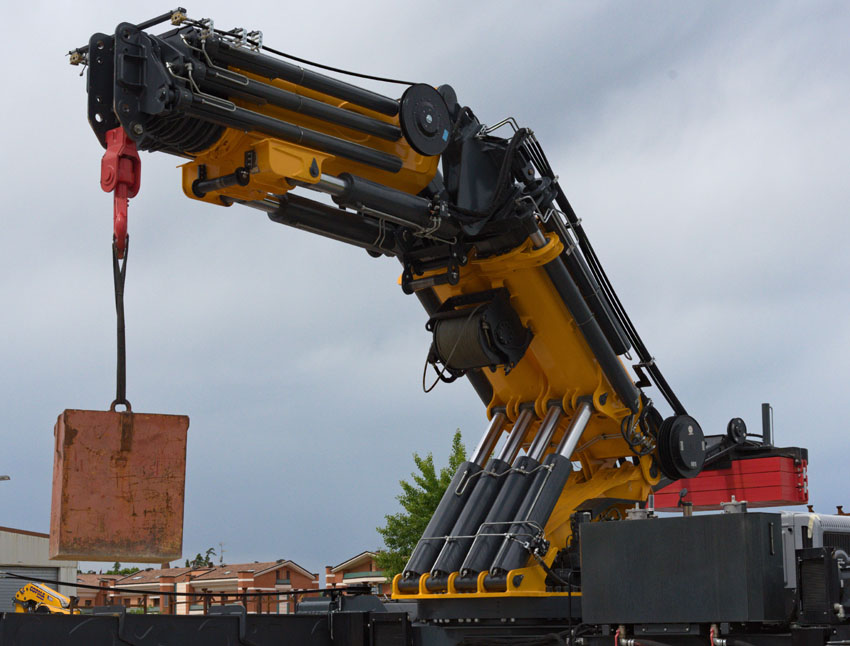
These loads of around 100 tons can also be lifted when the base boom is fully extended and at a steeper angle, which makes this an interesting machine for machine movements. You are able to perform heavy lifts over nearby obstacles whithout losing a lot of capacity on different heights. With the main boom not extended, the lifting capacity in different positions and lengths of the base boom is mostly around 650 t/m.
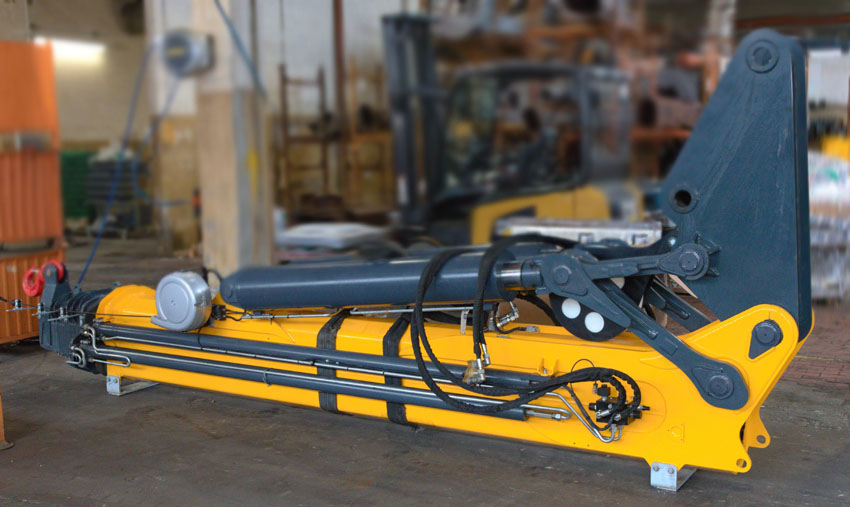
This long jib can be mounted onto the main boom, giving a total outreach of about 46 meters with 2,3 tons capacity. The maximum load at this jib is 15,3 tons, which can be lifted up to about 29 meters high. The max height at the tip of the jib is about 51 meters. The model with jib is called 7500.6J6, so 6x on base crane and 6x on the jib.

The 6-axled truck together with the crane (no ballast) weigh around 65 tons, which of course is not enough to get full stability on this crane. So for really heavy lifting, this additional 17,6 tons of ballast need to be installed behind the cab. Here we also see the front outriggers, they are installed in a V-shape to provide more stability to the front. The diesel tank at the right is for the powerpack of the crane.
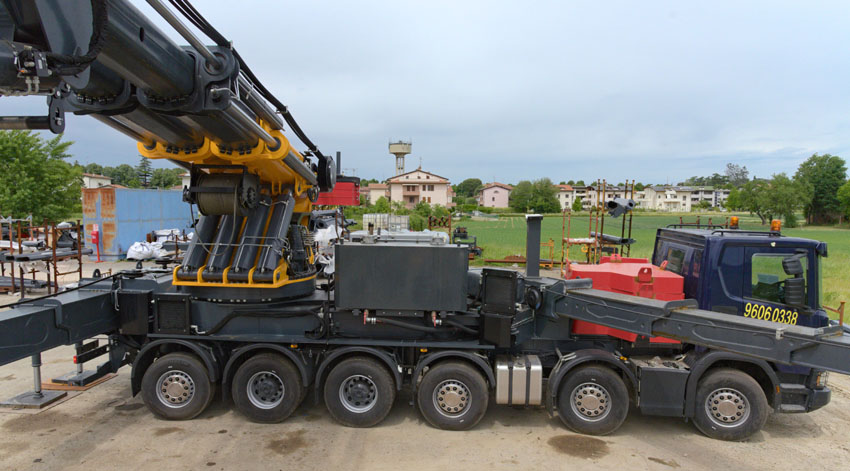
On top of the subframe we see the large slewing ring of the crane. To the right they installed the large oil tank for the crane and also some coolers for this oil.
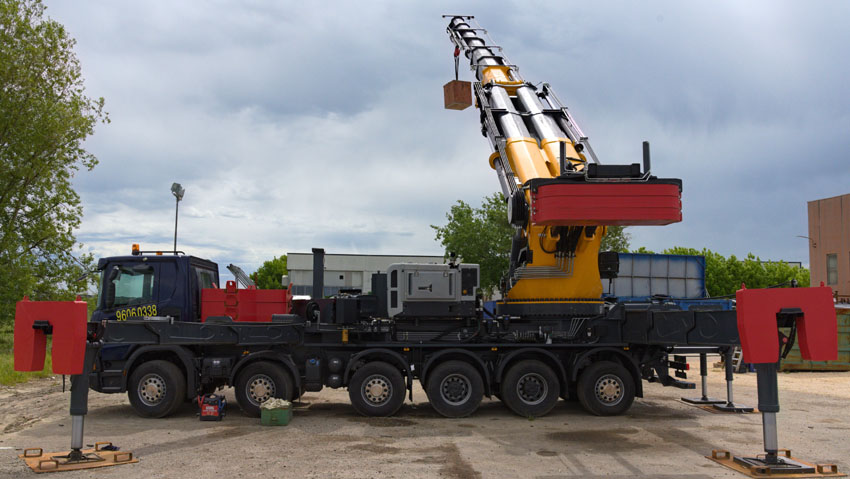
The powerpack is used to run the crane without the engine of the truck, it is made by Caterpillar. The crane can run on both powerpack or truck power.
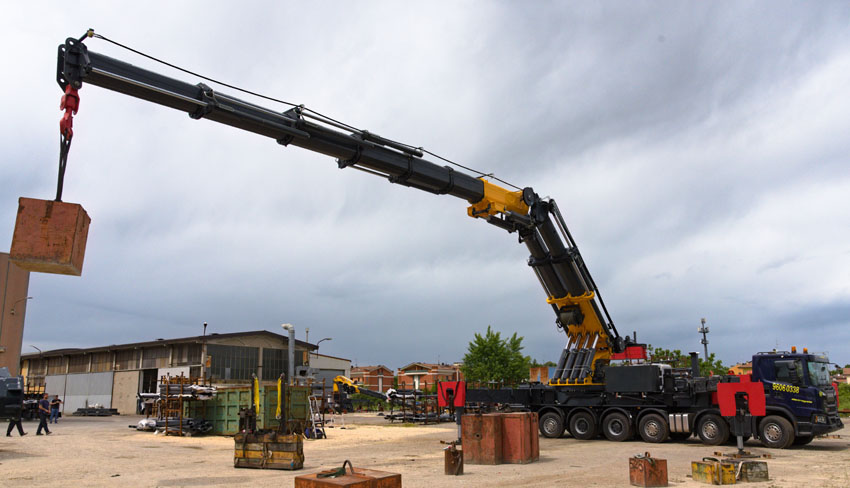
Additional stability is provided by adding counterweights to the main outriggers. Each outrigger leg is equiped with 1 ton of ballast (the red parts).
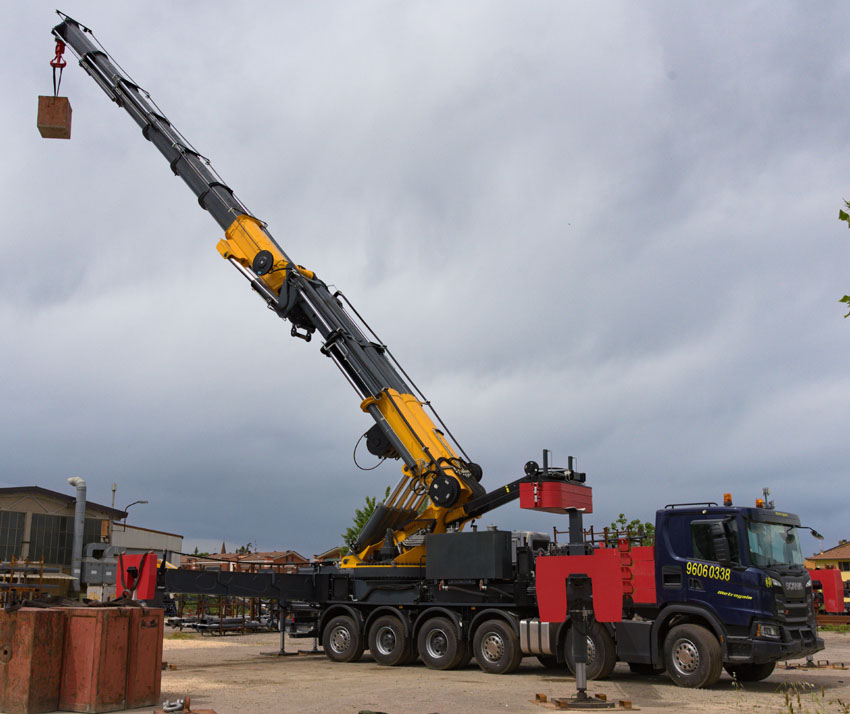
In this position a load of 19,5 tons can be lifted.
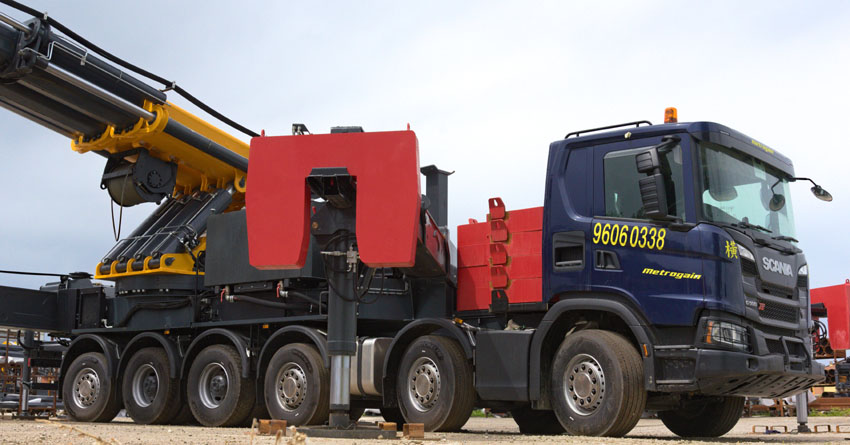
The chassis in use here, is a Scania G500 XT that is converted by Laxå to a 12x4*8. The first 3 axles and the last axle are steered, axle 4 and 5 are driven. The axles 3 and 6 are air suspended, the other have leaf suspension.
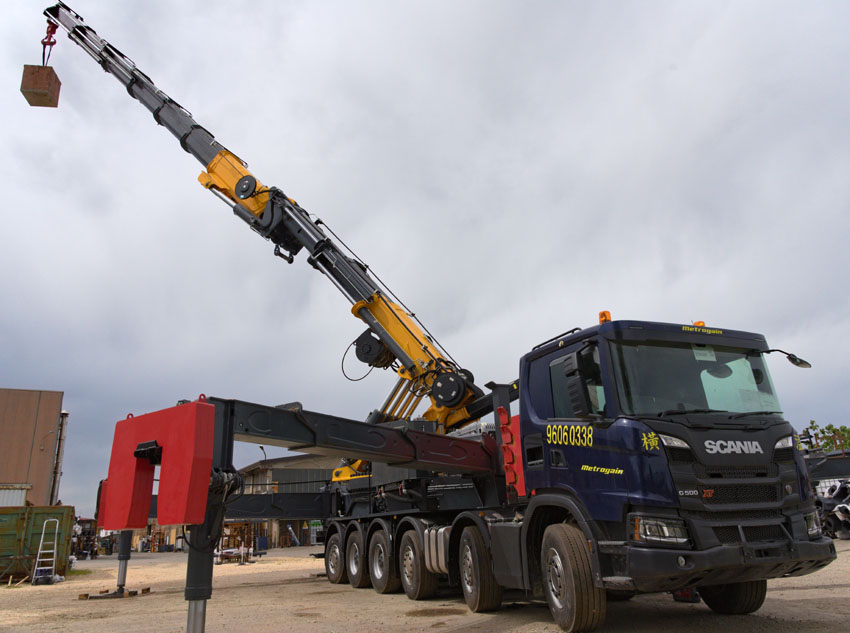
A very interesting new crane concept in the heavy range!
Many thanks to Copma for this demonstration.
Many thanks to Copma for this demonstration.
Pictures from Copma
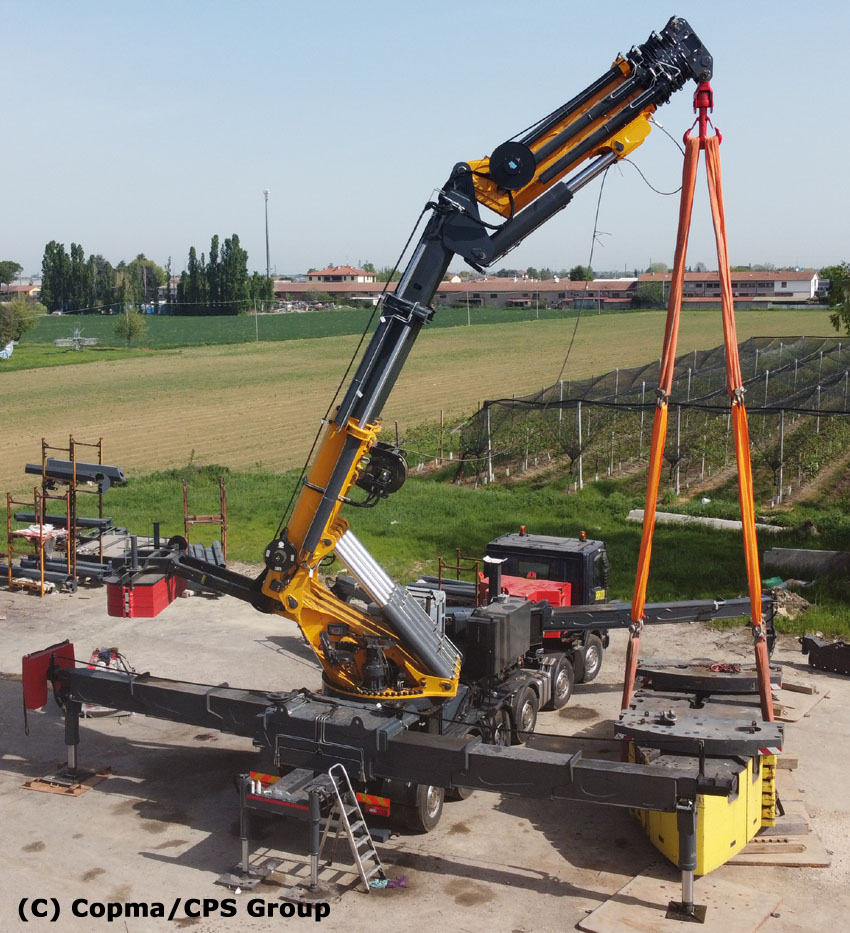
Here we see the 7500 on the testfield with 104 tons of testweight on the hook!
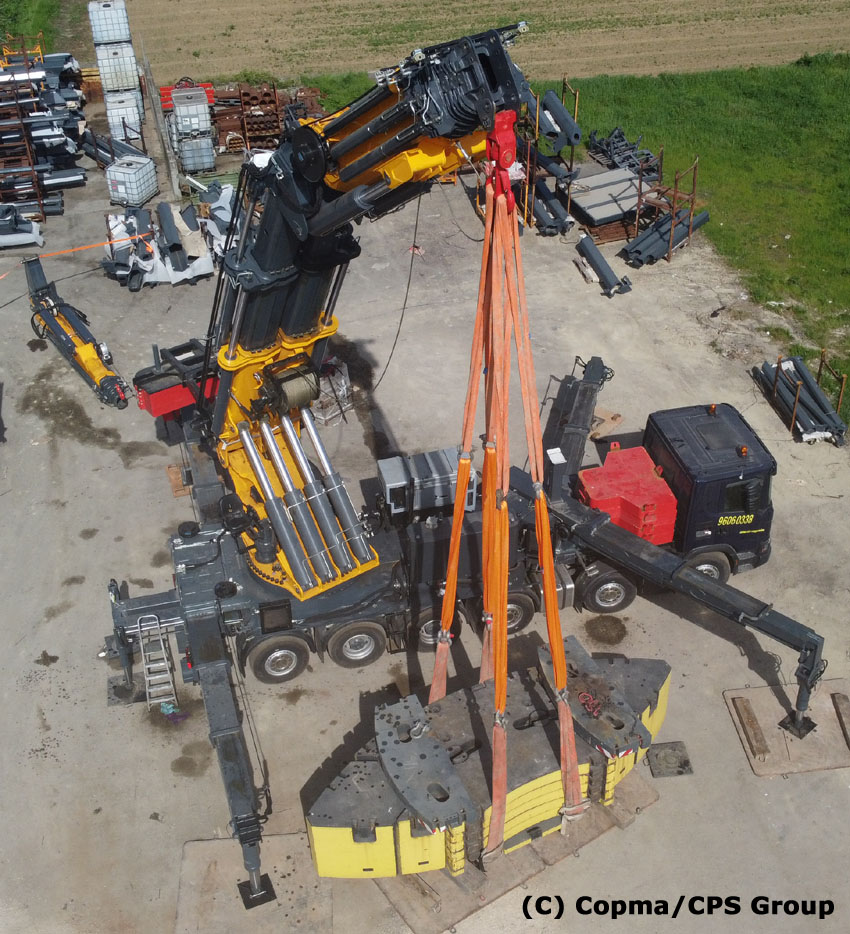
Here we have another great look from the top that clearly shows the 4 cylinders under the base boom, also the V-shaped front outriggers are clearly visible here. The jib can be seen in the background.
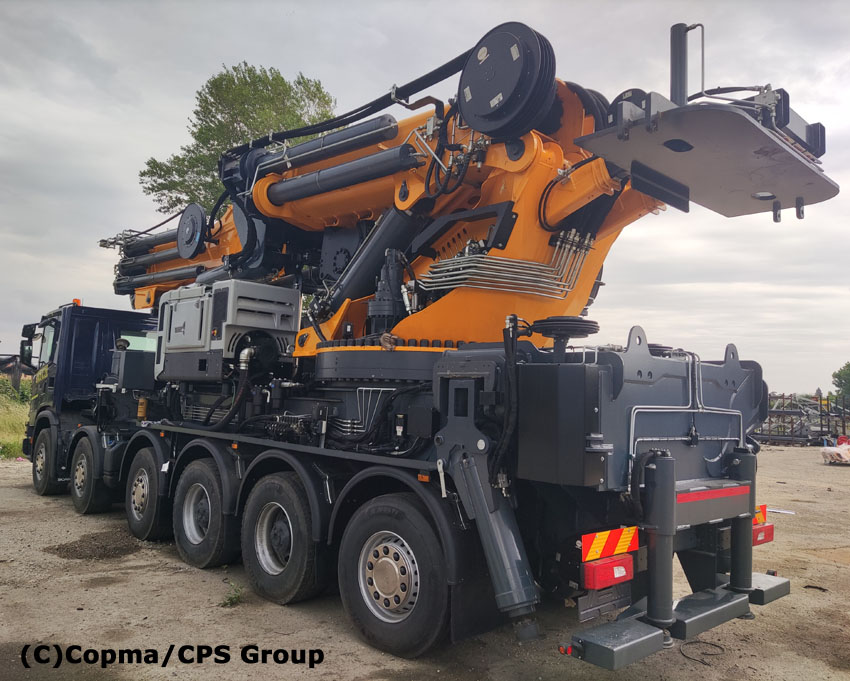
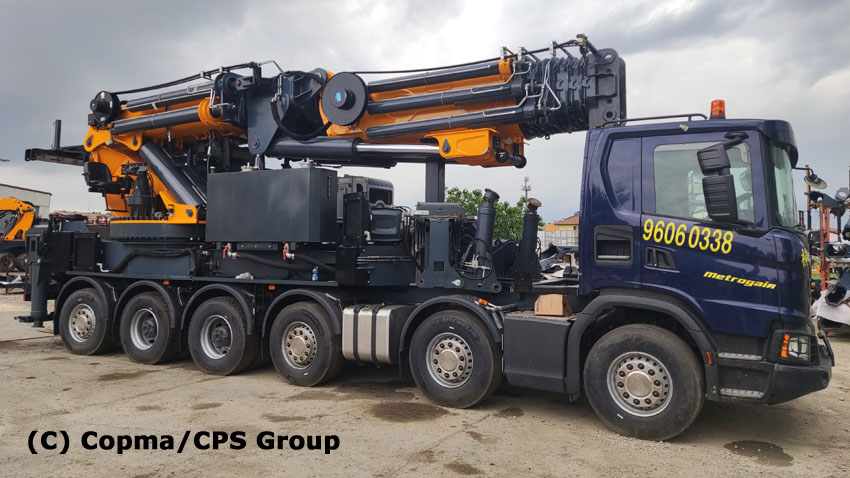
And this is how the crane is positioned during road travel. The boom is placed on a strut that is placed on the front outriggers. Also the ballast is removed, only the base plate behind the crane turret stays on the vehicle.
And here is a video of this crane in operation during this demonstration.

